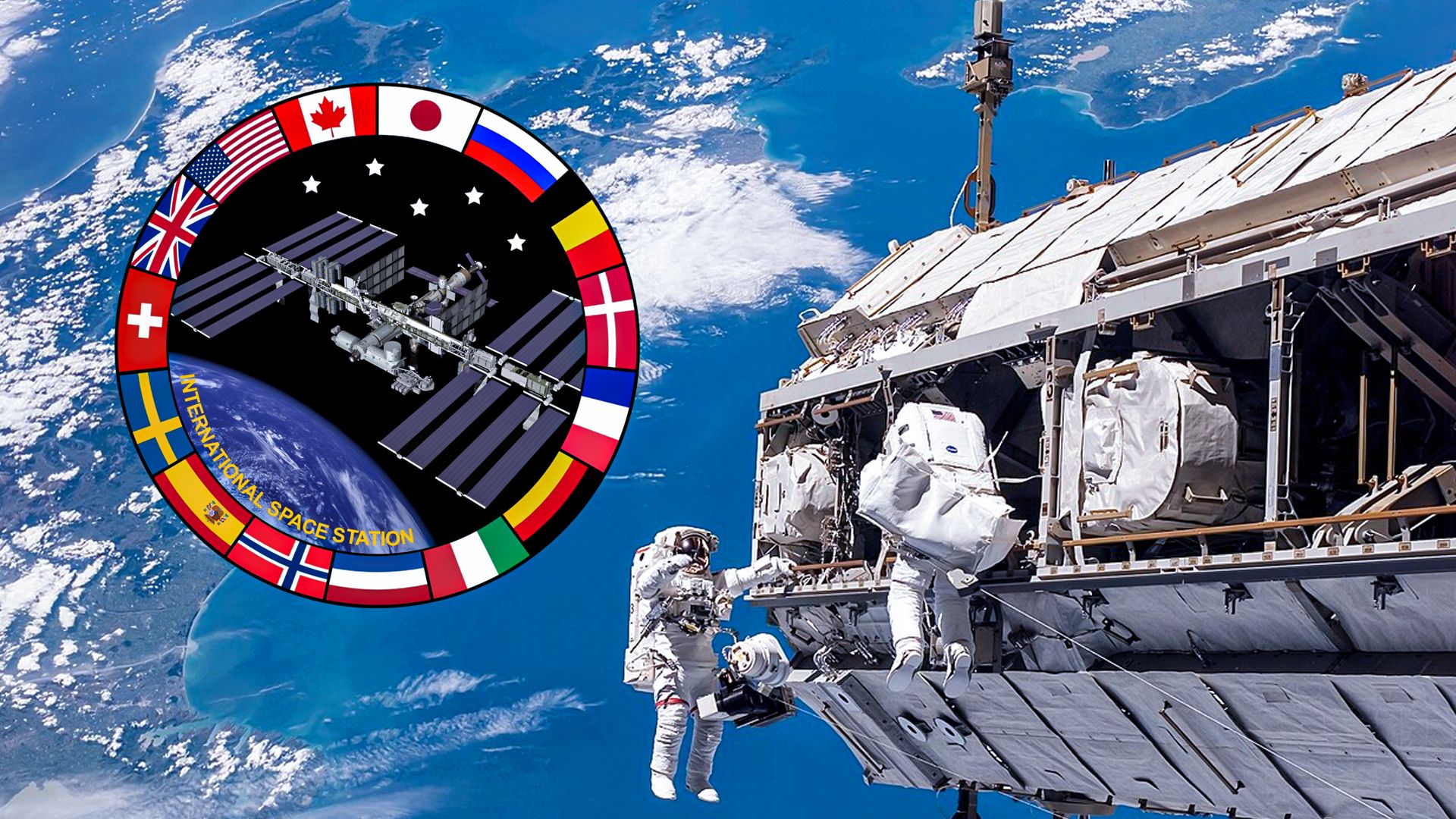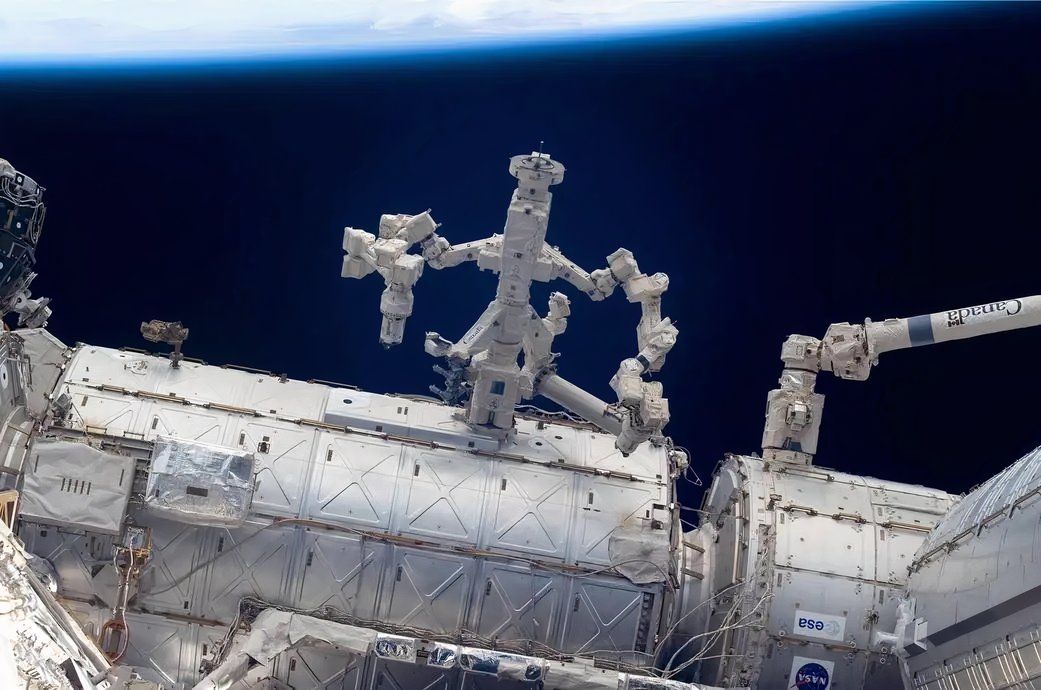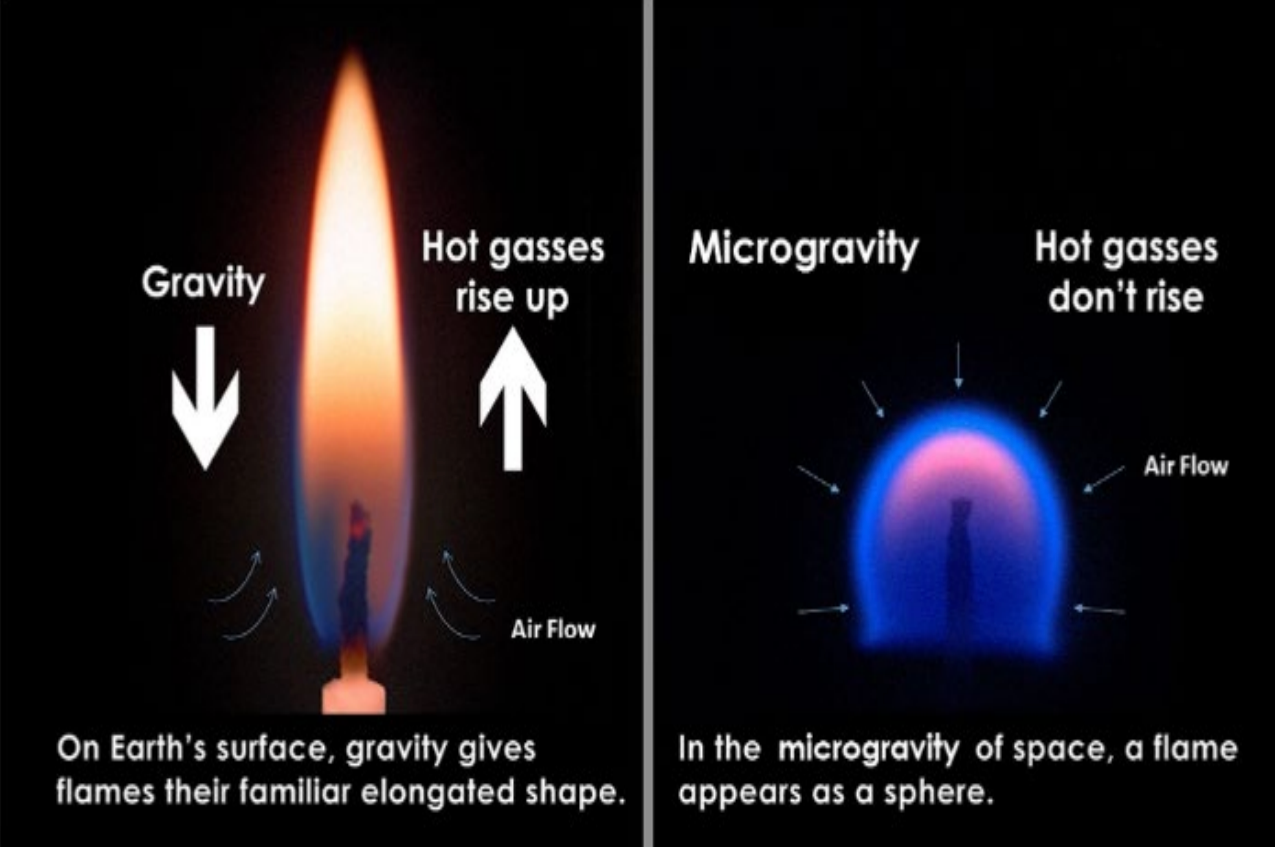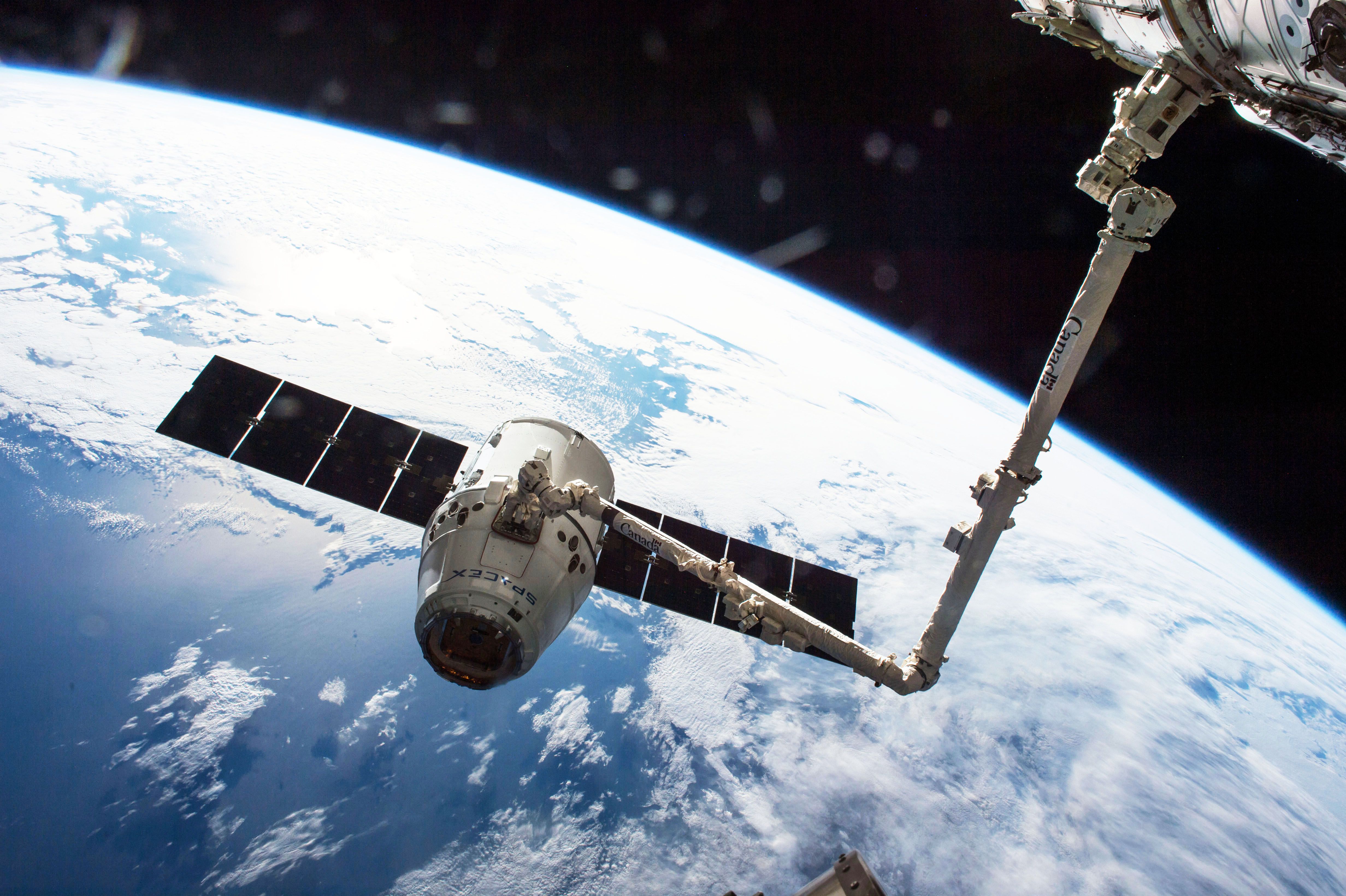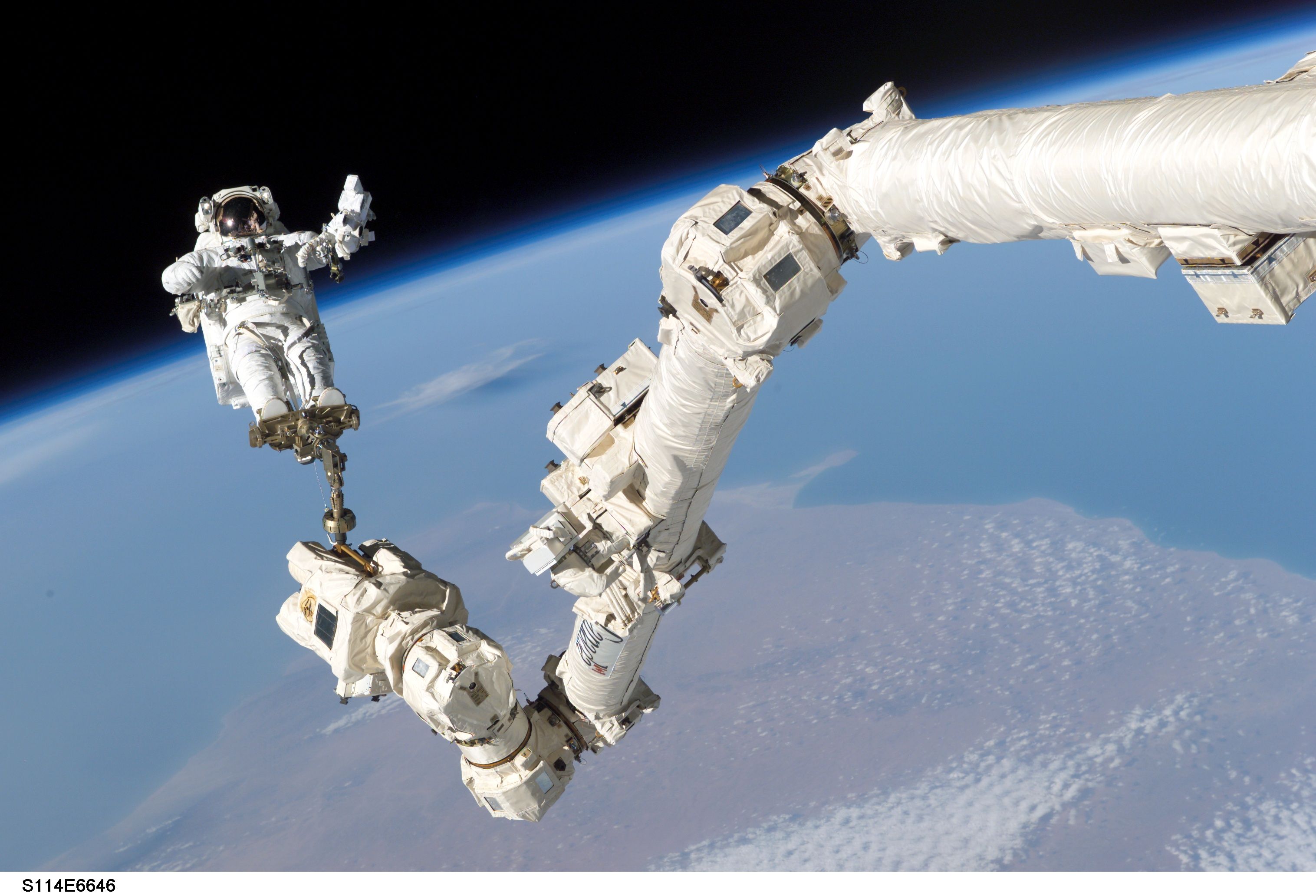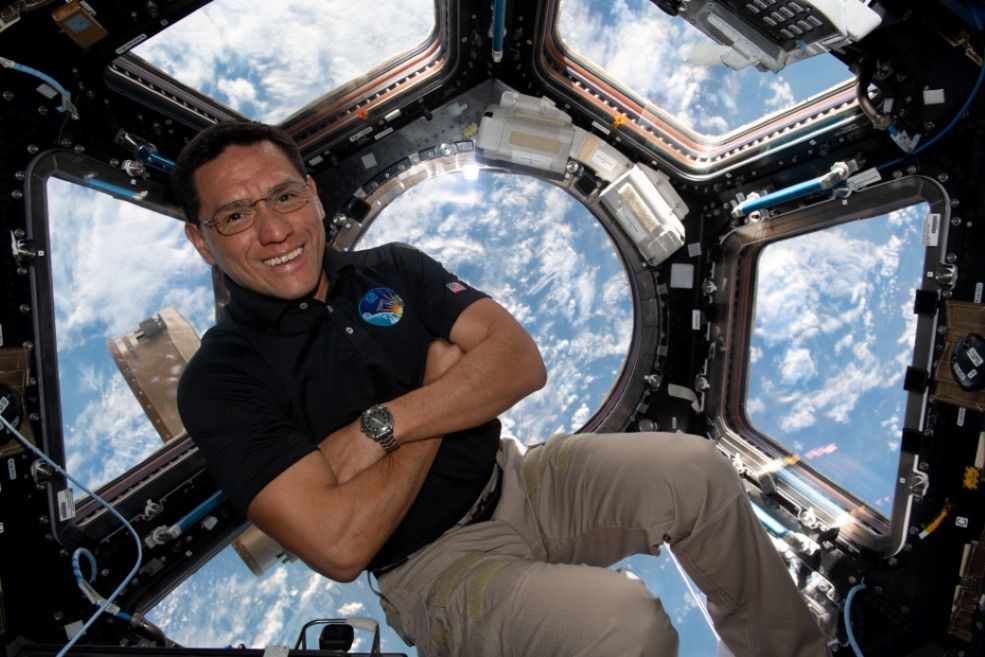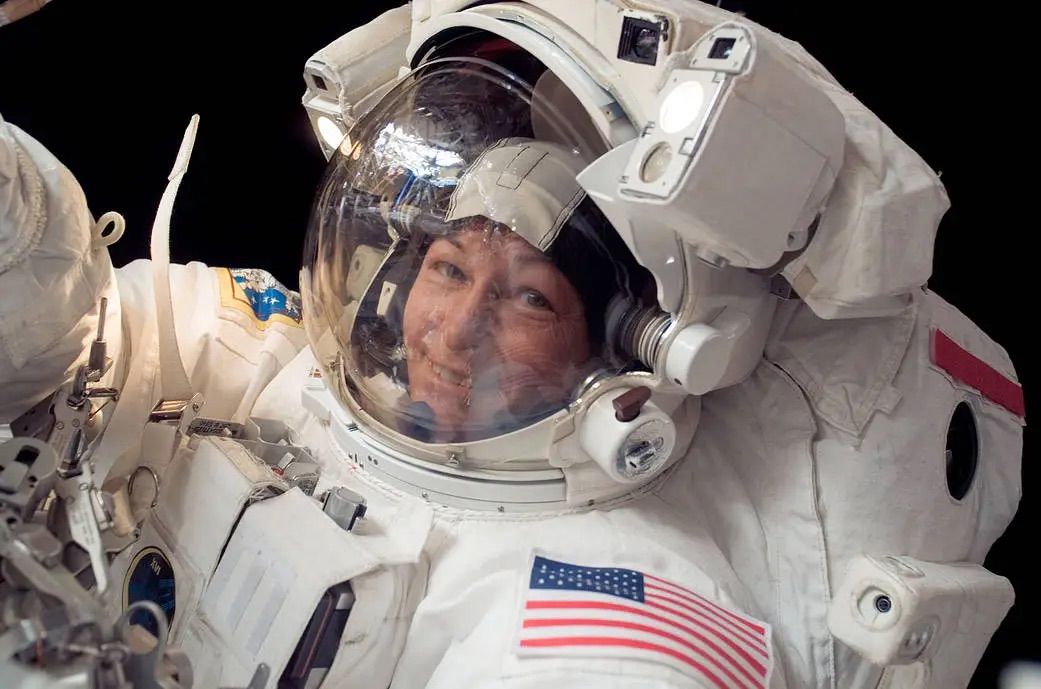Since its first module, Zarya, was launched in 1998, the International Space Station has represented one of humanity’s most remarkable feats of engineering and scientific exploration. A collaborative effort between the United States, Russia, Japan, Canada, and the European Space Agency (ESA), this monumental endeavor has brought together the brightest minds from diverse space agencies around the world, who share a common goal of advancing human presence in space, conducting cutting-edge research, and fostering global cooperation. This article will explore five fascinating facts about this floating hub of scientific research that has captured the imagination of millions.
1
Meet “Dextre,” the trusty maintenance robot aboard the ISS
Robotic maintenance is critical in space
Dextre, also known as the Special Purpose Dexterous Manipulator, is a highly sophisticated and versatile outboard robot aboard the ISS designed to handle delicate and precise tasks that would otherwise require a spacewalk by astronauts. Some of these tasks include changing batteries, replacing cameras, replacing various defective components in the station’s electrical system, and assisting in the installation and maintenance of scientific instruments and experiments on the exterior of the ISS.
Photo: NASA
Dextre is controlled remotely in real-time from Earth by robotics operators at mission ground control centers at NASA
or the Canadian Space Agency (CSA). Commands are transmitted from Earth to the ISS and then to Dextre, which is equipped with cameras and sensors that provide feedback to the operators. This feedback is essential for monitoring the robot’s actions and ensuring tasks are completed accurately.
Dextre can perform certain pre-programmed tasks without direct human intervention, which helps in managing routine operations efficiently. In the image below, Dextre can be seen working atop the Destiny Laboratory Module of the International Space Station.
Weighing in at 3,664 lbs (1661.9 kg), Dextre’s design and features, listed below, are tailored to make it a highly capable and versatile robotic system capable of performing complex tasks essential for maintaining and supporting the operations of the ISS.
- Dual Arm Structure: Dextre has two robotic arms, each equipped with seven joints, allowing for a high degree of flexibility and precision. These arms can manipulate tools and components with great accuracy
- End Effectors: At the end of each arm, Dextre has specialized tools known as end effectors. These can grasp, manipulate, and interact with various objects and instruments on the ISS
- Tool Holster: Dextre is equipped with a tool holster that holds a variety of tools needed for different tasks. This allows it to switch tools as required for specific operations
- Cameras and Sensors: Dextre is fitted with cameras and sensors that provide visual and tactile feedback to operators on Earth. This helps monitor its activities and ensure precision in its tasks
- Modular Design: Its modular design allows for easy maintenance and upgrades, ensuring that Dextre can adapt to new tasks and technologies as needed
- Thermal Control System: To operate in a harsh space environment, Dextre has a thermal control system that manages its temperature, ensuring optimal performance
The ISS’s solar array wingspan (356 ft, 109 m) is longer than the world’s largest passenger aircraft, the Airbus A380 (262 ft, 80 m).
2
A scientific laboratory like no other
Microgravity provides unique opportunities for discovery
The ISS features a state-of-the-art scientific laboratory capable of conducting experiments that are not possible on Earth. Thanks to what NASA calls microgravity (which is not the same as zero-gravity), ISS researchers can observe phenomena that are otherwise masked by Earth’s gravitational pull, opening up a world of scientific discovery that can lead to transformative advancements.
One of the most profound areas of study in microgravity is fluid dynamics. On Earth, gravity influences fluid behavior significantly, but as demonstrated in the video below, in the microgravity environment of the ISS, fluids behave in ways that are impossible to study on our planet. For instance, scientists have conducted experiments examining how fluids mix and flow without the interference of gravity-driven convection currents. This research has significant implications for improving industrial processes and developing advanced materials.
Combustion experiments aboard the ISS also benefit immensely from the microgravity environment. On Earth, gravity affects the shape and behavior of flames, but in space, scientists can study spherical flames, allowing them to delve into the fundamental processes of combustion. These studies contribute to the development of cleaner and more efficient combustion technologies, which can have a direct impact on reducing pollution and enhancing energy efficiency.
Photo: NASA
3
If you like sunsets, you’ll love life aboard the ISS
Although you may have trouble sleeping
The ISS orbits Earth at an altitude of approximately 250 miles (402.3 km) at a mind-blowing speed of 17,500 mph (28,000 kph). As such, the ISS orbits Earth every 90 minutes, which means the ISS crew experiences 16 sunrises and sunsets every day. While everyone enjoys a nice sunset, this presents a challenge for ISS crew members who struggle with their “circadian rhythm”- their body’s mental and physical internal clock, particularly when it comes to sleep. To address this, SAGA Space Architects have developed a “circadian light,” which is described on their website as below.:
“Through the meticulous use of different hues of color to simulate intense sunrises, varied daylight, and calming sunsets, the Circadian Light can carefully regulate the astronauts’ circadian rhythms to ensure that they focus during the day and sleep during the night. Compensating for the monotonous environment of space, the lighting system emits custom light for each individual day to simulate the natural change in lighting of shifting weather on Earth.” – SAGA Space Architects
Denmark astronaut and commander of ISS for Expedition 70, Andreas Mogensen, explains the effects of circadian light technology and its benefits below.
4
The ISS has a giant robotic arm
Canadarm2 welcomes visitors to the ISS and more
The ISS features a massive 57.7-foot (17.6 m) robotic arm called Canadarm2, which consists of two long sections with seven joints in the middle. On both ends of Canadarm2 is a “latching end effector,” which functions as its hands. Either “hand” can be anchored onto one of four “power data grapple fixtures,” which provide and transmit power, video, and data.
Photo: NASA
Canadarm2 can be controlled by the crew aboard the ISS or a ground team at NASA or the CSA. By latching from one power data grapple fixture to the next, Canadarm2 can “walk” around the ISS to accomplish its three primary tasks:
- Receive visiting spacecraft and dock them to the ISS
- Move astronauts, supplies, Dextre, and other equipment
- Perform ISS maintenance and repair
The Canadarm2 is primarily tasked with capturing and docking spacecraft. When a cargo or crew spacecraft approaches the ISS, Canadarm2 extends its reach to securely capture the vessel and guide it to the docking port. This capability is essential for the seamless transfer of supplies, equipment, and personnel, ensuring the continuous functioning of the space station.
Photo: NASA
Beyond its role in docking, Canadarm2 is instrumental in moving equipment and supplies both inside and outside the ISS. It adeptly maneuvers large payloads, facilitating the installation and replacement of critical components like solar panels and scientific instruments.
Assisting astronauts during spacewalks is another important function of Canadarm2. By providing stability and precision, it acts as an extended hand for astronauts, enabling them to perform repairs and installations that would otherwise be challenging in the microgravity environment. In the photo below, NASA astronaut Stephen Robinson catches a ride on the Canadarm2.
The space station is 356 feet (109 meters) end-to-end, one yard shy of the full length of an American football field, including the end zones.
5
The men and women of the International Space Station
Perhaps the most fascinating thing about the ISS is the people aboard
The thought of spending even one minute in outer space strikes fear and terror in the minds of astrophobes, and the idea of floating alone in space tethered to a spacecraft is nightmarish for most. However, for NASA astronauts, spending time in space is a dream come true.
Photo: NASA
One such astronaut, Dr. Frank Rubio, pictured above inside the ISS’s scenic cupola, holds the NASA record for the longest single spaceflight by an American astronaut. Rubio’s 371-day stint aboard the ISS began on Sept. 21, 2022, and concluded on Sept. 27, 2023. During this time, he completed approximately 5,936 orbits (94,976 sunsets), traveled 157 million miles, and welcomed 15 visiting spacecraft to the ISS. Rubio’s feat broke the record previously held by NASA astronaut Mark Vande Hei, who spent 355 days aboard the ISS.
In an official statement, NASA Administrator Bill Nelson praised Rubio for his commitment to space exploration and discovery:
“Our astronauts make extraordinary sacrifices away from their homes and loved ones to further discovery. NASA is immensely grateful for Frank’s dedicated service to our nation and the invaluable scientific contributions he made on the International Space Station. He embodies the true pioneer spirit that will pave the way for future exploration to the Moon, Mars, and beyond.” – Bill Nelson
As if his achievements with NASA aren’t impressive enough, Dr. Rubio also served as a UH-60 Blackhawk helicopter pilot in the US Army with more than 600 hours of combat deployments to Bosnia, Afghanistan, and Iraq. Dr. Rubio was also a member of the West Point “Black Knights” Parachute Team, where he became a Jumpmaster with over 650 freefall skydives. Along the way, Dr. Rubio became a board-certified family physician and flight surgeon, having earned a Doctorate of Medicine from the Uniformed Services University of the Health Sciences. Some of Dr. Rubio’s numerous medals and awards include:
- Defense Superior Service Medal
- Legion of Merit, Bronze Star with two oak leaf clusters
- Meritorious Service Medal with three oak leaf clusters
- Army Accommodation Medal with four oak leaf clusters
- Army Achievement Medal with four oak leaf clusters
- NATO Medal
- The Armed Forces Expedition Medal
- Iraq Campaign Medal with two oak leaf clusters
- Afghanistan Campaign Medal
The record for the longest spaceflight overall belongs to Valeri Polyakov, the Russian cosmonaut who spent 437 days aboard the Mir space station between January 1994 and March 1995.
Renowned for her remarkable achievements and contributions over a 29-year career with NASA, Dr. Peggy Whitson, pictured below during a seven-hour spacewalk, holds NASA’s record for the most cumulative days aboard the ISS, having spent 675 days over three missions. Whitson, who retired in 2018, has ten spacewalks under her belt, having spent 60 hours and 21 minutes floating in the cosmos. As told in an interview with 4-H, Whitson’s passion for science and space began when she was just nine years old.
“My first inspiration was, of course, when I was nine years old, and I watched the walk on the moon. But seeing the first female astronauts selected the year I graduated from high school (1978).”- Dr. Peggy Whitson
Whitson pursued her education with focus and dedication, earning a Bachelor of Science degree in biology and chemistry from Iowa Wesleyan College in 1981 and a doctorate in biochemistry from Rice University in 1985. Whitson’s journey with NASA began in 1986 when she joined the Johnson Space Center as a National Research Council Resident Research Associate. Her expertise and hard work led to significant roles within the organization, including serving as the Project Scientist of the Shuttle-Mir Program from 1992 to 1995. Her dedication and excellence in her work ultimately culminated in her selection as an astronaut candidate in 1996.
Photo: NASA
A trailblazer in the field of space exploration, Dr. Whitson made history as the first female commander of the International Space Station (ISS) during Expedition 16 in 2007. She further solidified her reputation by commanding the ISS again during Expedition 51 in 2017. Whitson’s remarkable achievements have inspired countless aspiring astronauts and demonstrated the vital role women play in space exploration. A few of Ms. Whitson’s awards and achievements are listed below.
- NASA Exceptional Service Medal (four times)
- Inducted into Iowa Aviation Hall of Fame
- BioHouston Women in Science Award
- Russian Medal of Merit for Space
- NASA Space Flight Medal (twice)
- Iowa Transportation Museum, Hero of Valor
- NASA Outstanding Leadership Medal
- Group Achievement Award for Shuttle-Mir Program
- NASA Tech Brief Award
- NASA Space Act Board Award (twice)
- NASA Silver Snoopy Award
- NASA Certificate of Commendation
- NASA Sustained Superior Performance Award
- Krug International Merit Award
- President’s Honor Roll (twice)

